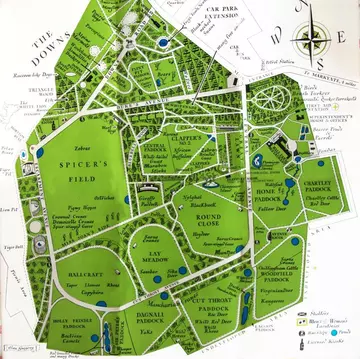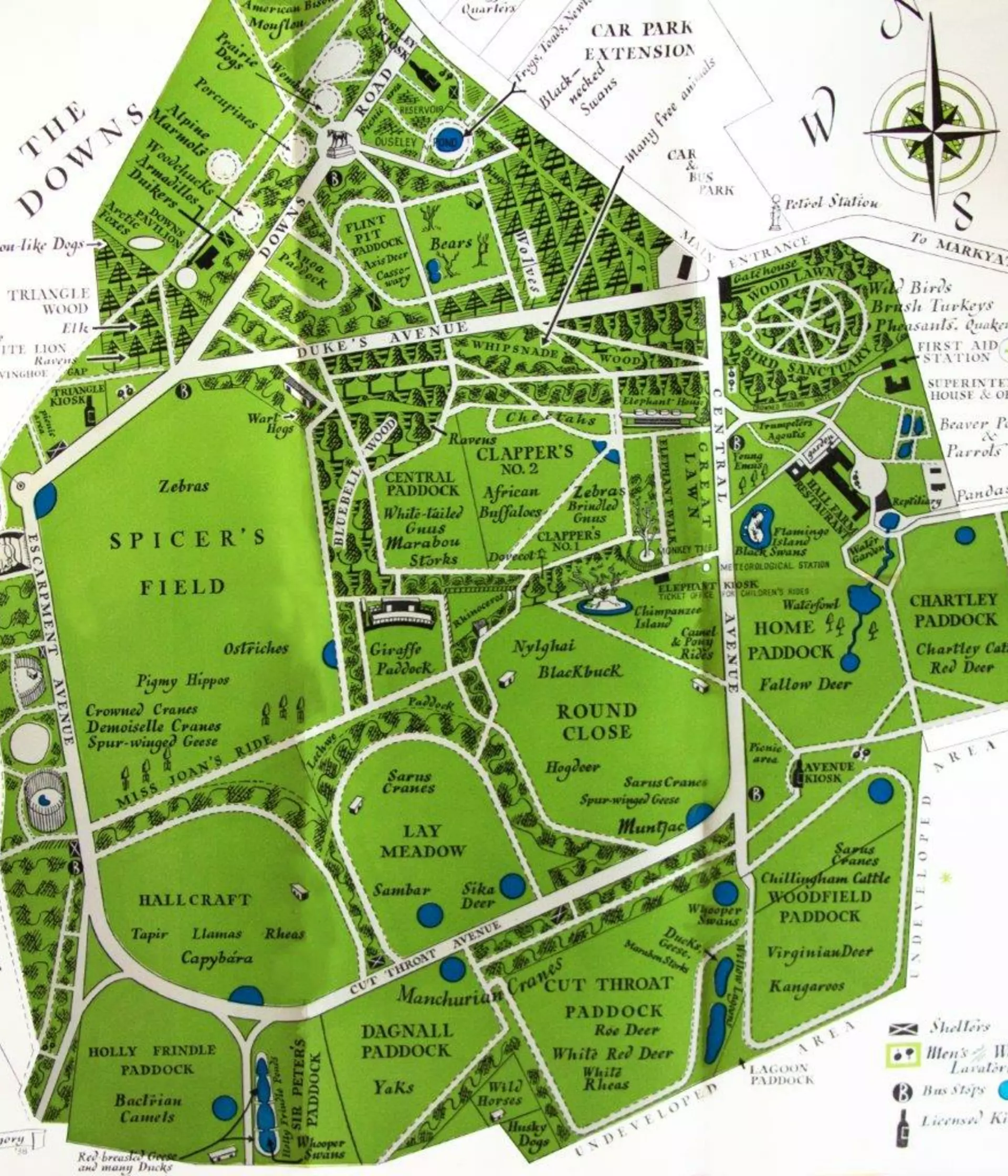
Guest blog by Paul Wilson
Whipsnade Zoo during the war
Since its opening the Zoo had rapidly established itself as a popular place to visit and it was a shock when the Zoo closed immediately after war was declared on 3rd September 1939.
The Zoo opened again after a week but soon closed for the 1939/40 winter, partly due to lack of staff (many men having been called up) and also because of a scheme to cultivate the yet undeveloped land on the site. Food for the animals was going to be at a premium through the war and immediate steps were taken to make the Zoo become self-sustainable.
Feeding Zoo animals during world war 2
Wheat, other grains and a variety of vegetables were grown to provide food for the animals and domestic sheep, pigs and cattle were kept alongside their exotic cousins. By the end of the war the area, now the railway yard, elephant paddock and Passage through Asia, was being farmed intensively. It produced most of the requirements for both Whipsnade and London Zoos with a significant surplus supplied to the Ministry of Food.
The Bedfordshire industrial towns of Luton and Dunstable were key targets for air raids during the war and there was great concern that the Whipsnade chalk lion would be a good marker for enemy aircraft. Accordingly, after all of the hard work in creating the feature just six years before, troops were brought in to help camouflage the landmark with brushwood, nets and manure.
With its superb views of the surrounding countryside the Fellows' Pavilion (where the Lookout Café is today) was converted into an Air Raid Defence post and the Estates Office became the local Headquarters. When the sirens sounded to warn of a forthcoming raid, they were surprisingly amplified by a more natural, eerie, but similar sound - the howling of the wolves close by.
Whipsnade itself suffered some damage. Some forty-one bombs were dropped on the Zoo during three raids in autumn 1940, both explosive and incendiary. There were only two casualties, one of the oldest inhabitants of the zoo, a spur-winged goose and one of the youngest, a giraffe, that was so frightened by the noise that she ran herself to exhaustion and died. Some of the bomb craters created in the attacks were left to fill with water and became ponds that still exist in the paddocks.

London Zoo's animals move to Whipsnade
In the preparation for war, through the summer of 1939, some of London’s animals were transferred to Whipsnade for safety. The transfers included two giant pandas, two orangutans, four chimpanzees, three Asian elephants, three red pandas and an ostrich.
The famous and popular giant panda Ming was one of the transferees and meant that there were now three giant pandas at Whipsnade, Ming, Tang and Sung. They were the first ever to be seen in the UK and arrived in 1938 from China. At Whipsnade they were kept in a nondescript wire enclosure, adjacent to the Lubetkin elephant house, without any media frenzy or masses of people. Despite this unique collection, few people ever got to see them together.

Animals weren’t the only evacuees from North London, some keepers and a number of wives and children of other keepers were moved to the safety of the Bedfordshire countryside. This had a profound effect on the village of Whipsnade. There were now sufficient numbers of children for the school to reopen and there were so many girls that Guide and Brownies Companies were established by the wife of the Zoo’s superintendent Mrs Beal.
Mrs Beal’s jovial husband Captain W P B Beal (The Zoo’s first Superintendent, made famous by his curries in the Gerald Durrell’s book, Beasts in my Belfry) became the leader of the local Home Guard and made use of the Zoo’s facilities as far as he could. The Estates office became the Headquarters, the Cloisters were transformed into an indoor firing range and an outside range was created at the bottom of the downs below Bison Hill. The Zoo witnessed groups of men marching around, initially with just broom handles and farm implements and later with proper weapons.
With both the Home Guard and Air Defence teams sharing facilities there was a healthy rivalry between the Home Guard’s Captain Beal and the Air Defence Warden Albert Corbett very similar to the fictional standoffs between Captain Mainwaring and Air Raid Warden Hodges, Whipsnade’s very own Dads Army!
This article is based on extracts from the book Whipsnade ‘My Africa’ by Lucy Pendar who lived at the Zoo through the war years. She is the daughter of the Park’s Resident Engineer and Air Defence Warden Albert Corbett.
